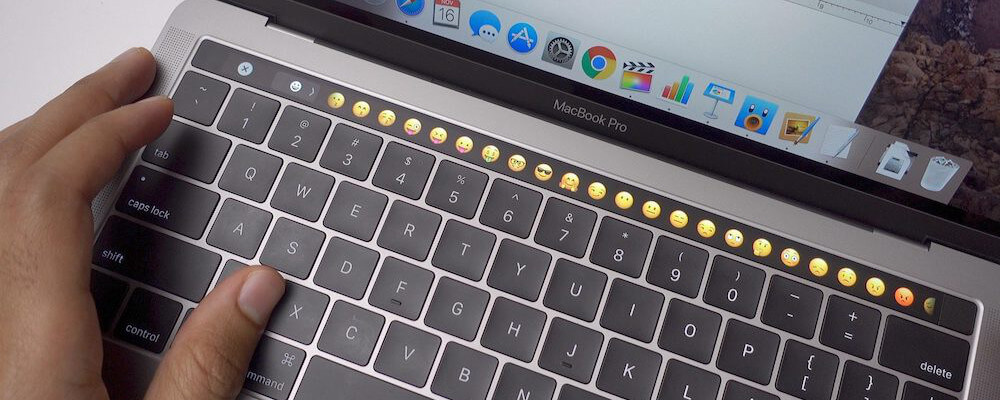The use of emoji or emoticons has become more of a trend for expressing emotions, thoughts and ideas not just on iPhones but also on desktops. Just a few quick taps on keyboard can help you express your emotions. If you love to chat or use social media on your Mac then you may also be interested in finding out how to use Emoji on Mac. So, let’s first find out what Emoji are all about and then get on to how you can use them on your Mac.
Jump To Section:
What Emoji Really Are?
Emoji are nothing but little pictures which are used to replace single characters in the digital text and allow the users to be able to express lots of different emotions and concepts. Besides the faces that show different expressions, emoji can be anything from food items and animals to vehicles, flags and buildings.
Emoji were first made available for the Mac users with OS X 10.7 Lion. Ever since, more and more emoji are added continuously to give users a greater array of expressions to choose from and express their emotions during a text-based conversation.
How To Use Emoji On Mac?
There can be different ways of using Emoji on Mac. Let’s find out what they are.
The Standard Method:
The standard method for inserting Emoji in your texts is as under:
- Place your cursor in the text field where you want to insert emoji, such as the Twitter text field for posting your tweets on Twitter
- Now, press Command & Control keys together from keyboard and then press space bar for launching characters palette on your Mac
- Simply click on any Emoji icon from sidebar on left hand side to insert an Emoji
(Emoji are usually divided in different categories including Animals & Nature, Smileys & People, Activity, Food & Drink, Objects, Travel &Places, Flags, and Symbols)
- Just double-click the Emoji that you want to use so that it is inserted in the text right where you had left the cursor
- Once done click the red-colored ‘Close Window’ button towards the top right side of Characters palette so that it can disappear
If you are unable to see different Emoji icons, you can click on gear icon towards top left side of window and choose Large for making them appear bigger. A tip here is using search field for finding emoji that you want to use. Just type in initial letters for the action, face or object that you want to insert and it will show up right in front.
Alternative Method
If the standard method described above doesn’t seem to work then you can try to launch Edit drop-down list using top bar where you can search Special Characters (or simply Characters or Emoji And Characters depending on your macOS version).
For instance, when using TextEdit, you can:
- Click Edit
- Click Special Characters (you can also go with the keyboard shortcut CMD+Alt+T) for launching Characters pane
- Select desired Emoji from menu on left hand side
- Double-click on the Emoji to make it appear in Text Edit document. It will appear even if you are in plain-text mode
One of the above mentioned methods will work just fine in Chrome, Safari, Firefox and Opera, iTunes, Mail, Mac App Store, TweetDeck and many other stock as well as third-party Mac apps.
Touch Bar Support
If you have a new Macbook Pro that comes with Touch Bar support, it will be a lot easier for you to access emoji characters on your Mac.

Touch Bar is dynamically context-sensitive, however, in most of the text-entry situations it at least offers a button for activating emoji library. All you have to do is to tap it and your entire Touch bar will turn into your Emoji bar that you can swipe through for easily inserting desired Emoji. It is possible for you to quickly jump to desired section such as recently used, faces, food, nature, etc.
So, Touch Bar really makes inserting Emoji easier than ever on your Mac. But you can only take advantage of this feature in newer Macs that come with Touch Bar support.
Operating System Variations
Normally, you should not have to worry at all about any variations in operating systems. However, it is important to remember that while Emoji use a universal Unicode system, their look may not be universal. And even though different companies try to stay as close as possible to accepted ‘smiley face’ interpretation, there are some trivial cases in which the differences appear to be more pronounced.
So, that’s exactly how to use Emoji on Mac and what variations can be expected in terms of how different Emoji will appear on your operating system. You can use any of the above mentioned methods for using Emoji on your Mac and latest Macbook models. Just have fun and write your emotions out!
Check Other Topics:
- How You Can Use Tapbacks And Emoji In iMessage On A Device Running iOS 10
- Adding Favorite Emojis To Your iOS Keyboard
- 15 Best Chat Apps for iPhone
